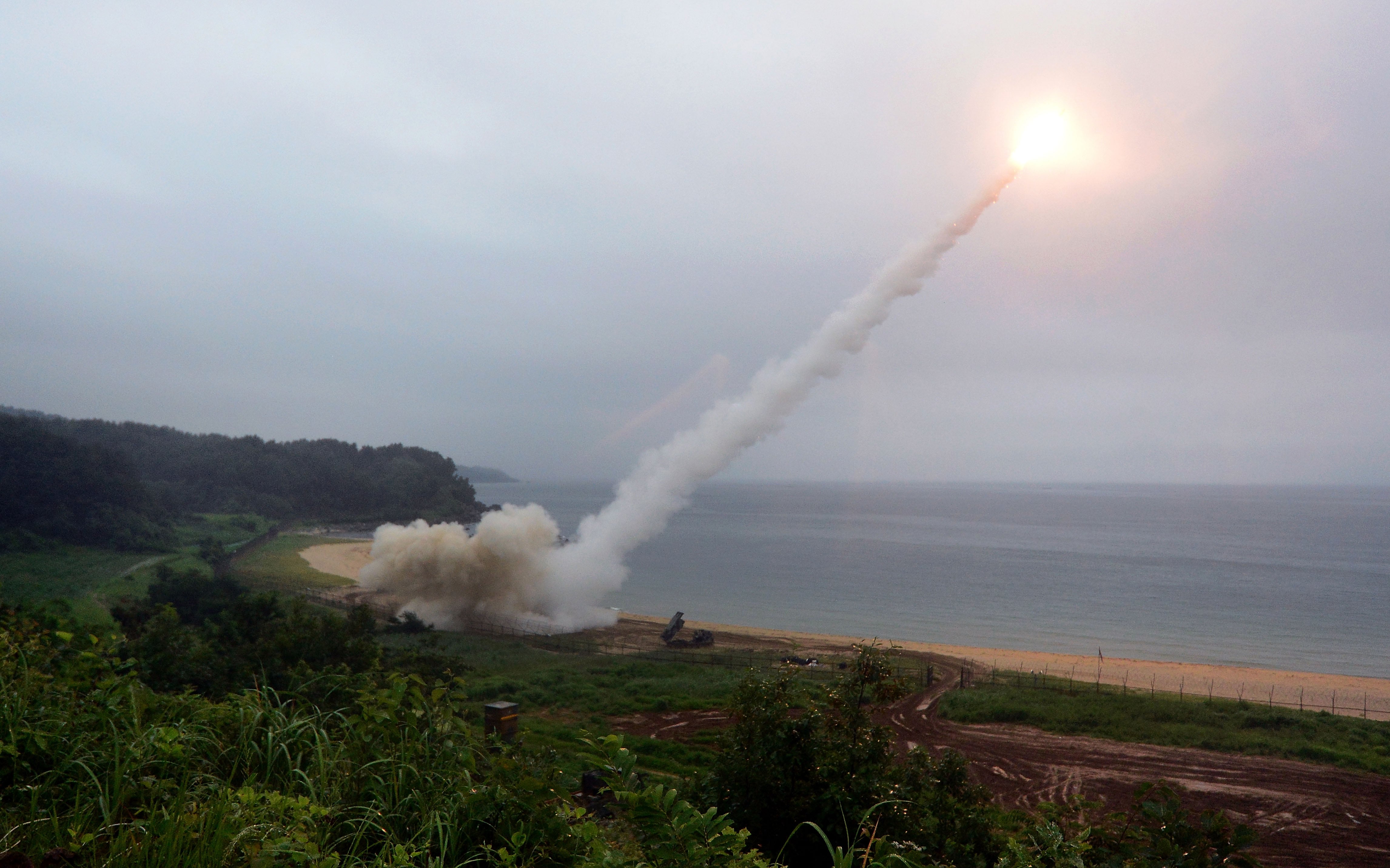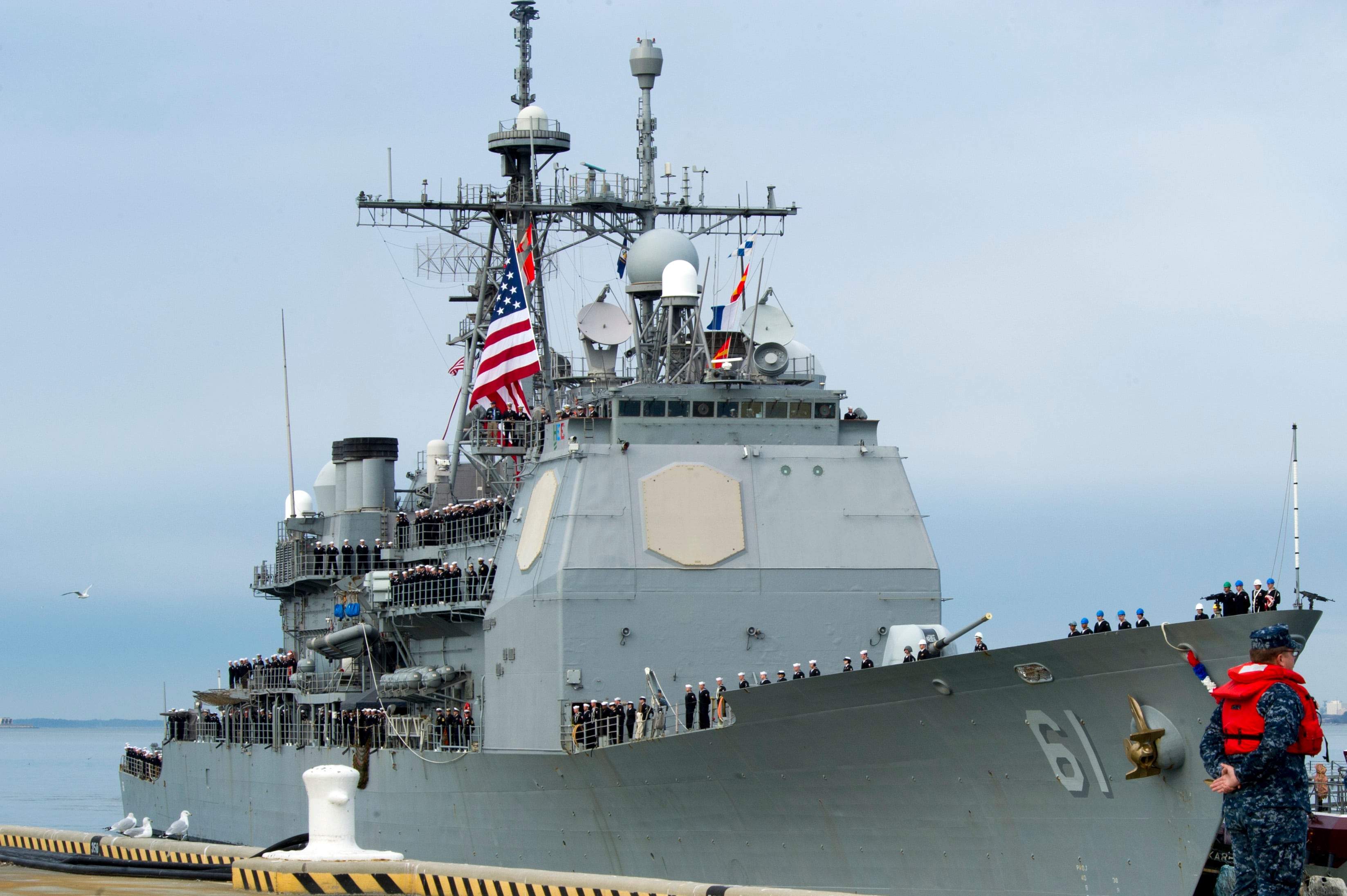In late September, the Washington Times published an opinion piece by Peter Vincent Pry advocating surgical conventional strikes to disarm North Korea. He overstated the ease of such an operation, ignoring the inherent operational and strategic complexities.
The threat of military force must be credible, and this article seeks to address the flaws in Pry’s arguments while providing a more realistic approach to the undesirable but possible situation where South Korean and U.S. military forces under Combined Forces Command is required to counter a clear and present threat from North Korea.
Citing a limited target set of two satellites, a few intercontinental ballistic missiles, the Yongbyon nuclear complex, ballistic missile submarines, bombers, and intermediate- and short-range missiles, he asserts that these could all be addressed with three aircraft carriers and the global strike force with little likelihood that North Korean leader Kim Jong Un will respond with a nuclear attack.
Oh, if it were only so easy.
I have attacked enemy targets from the air (Serbia) and supervised the synchronization of air and land combat (Iraq), and there is nothing simple about it, even in more permissive air defense environments than that of North Korea. Many of the targets are kept underground, mobile or both. As for North Korean satellites, the only time the U.S. has successfully shot down an orbiting satellite was Sept. 13, 1985. The U.S. Navy intercepted a failed U.S. satellite in 2008, but this was during its orbital decay, and intercept was to mitigate the hazards posed by reentry. U.S. policy on the use of anti-satellite weapons is not clearly stated, but generally opposes their use due to concerns about orbital debris and existing treaty obligations.
RELATED

The notion that the United States could mount such a campaign unilaterally is dangerously flawed. Any attacks would certainly put treaty ally South Korea at risk to a North Korean response, and possibly place Japan in the crosshairs. Consultation and cooperation with both treaty allies is an absolute must. China, while not an ally, must be made aware of the circumstances that would mandate a U.S.-South Korean strike. Those conditions could include clear indications that North Korea was preparing for a nuclear launch or other military preparations that move the threat from hypothetical to likely. I trust that these consultations with regional partners and players are ongoing.
Military action against North Korea will remain a last resort. As Adm. Harry Harris, commander of U.S. Pacific Command, said recently, “diplomacy is our main battery” against Kim, but he must “imagine the unimaginable.” Among the unimaginables that are contrary to Pry’s predictions: North Korea may indeed try to launch a nuclear attack on the U.S., South Korea or Japan. Kim may attempt to employ chemical or biological weapons of mass destruction such as chemical or biological weapons or a massively destructive conventional artillery barrage on Seoul.
A limited military option should be focused on the targets that pose an immediate danger ― launch sites, missiles and weapons. At the same time, military planners should keep some reasonable assumptions in mind. First, the allies have to be prepared for a protracted period of conflict and cannot assume that the first step will be the last. As a minimum, plans must be made and resources allocated for a long-term effort to suppress and defend against North Korea’s conventional artillery. Secondly, there must be an equally concerted effort to counter North Korea’s short- and intermediate-range ballistic missiles. Finally, there will be losses in any cross-border operation, and the force must be postured to execute combat search-and-rescue operations.
RELATED

South Korean and American military leaders trusted to defend against the North Korean threat know this, but there are other important audiences. U.S. citizens from Guam to Maine, South Koreans, and the Japanese should not be led to think there is an easy, “surgical” option ― but options do exist. North Korea and those who do or might support it must also know they cannot provoke with impunity.
There are other more imaginable military options that include strengthening U.S. missile defenses, especially in under-defended Hawaii. The allies need to be better prepared to prevent and, if necessary, survive an electromagnetic pulse attack and the North Korean cyberthreat.
If push comes to shove, the South Korean-U.S. alliance will be ready, but in a measured, practical and sustainable way.
Dan Leaf is a retired three-star general and Air Force fighter pilot. He last served on active duty as deputy commander of U.S. Pacific Command and was vice commander of Air Force Space Command.








